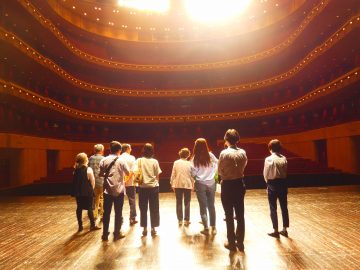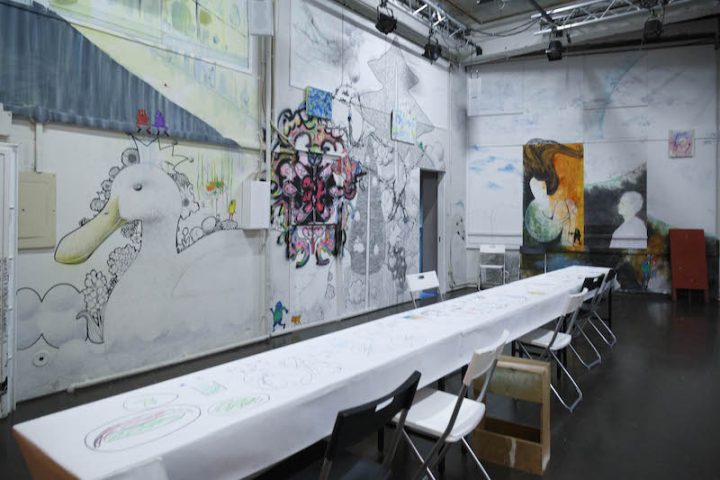2017 (66th) Kanagawa Culture and Sports Award Presentation Ceremony, Interviews with the Award Winners
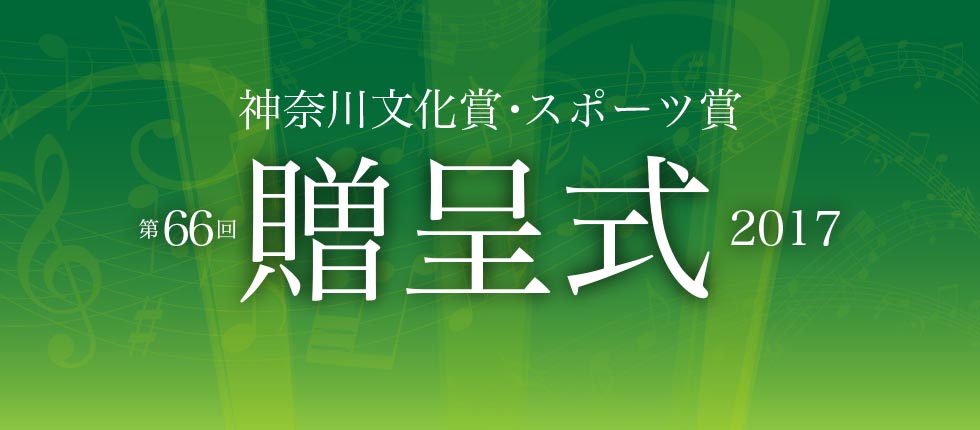
[Governor Kuroiwa]
Congratulations to all of you who are receiving the prestigious 66th Kanagawa Culture and Sports Award today. We are truly happy to receive your awards, and we respect your daily training and efforts up to this day. The Kanagawa Culture and Sports Award is an honorable award that is given to Kanagawa residents to honor those who have made outstanding achievements in the fields of culture and sports that are the pride of Kanagawa. The venue for this event, the Prefectural Music Hall, was designed by Kunio Maekawa, who studied under the world-renowned architect Le Corbusier, and opened as Japan's first full-scale music hall. Even now, more than 60 years later, it is loved by many Kanagawa residents, from professionals to amateurs. As one of the organizers, I am very happy to hold the historic Kanagawa Culture and Sports Award presentation ceremony in such a historic hall. There are less than 1,000 days until the Tokyo 2020 Olympic and Paralympic Games in three years. The Rugby World Cup will also be held in 2019, with the final and semi-finals to be held in Yokohama. Some of the winners of this sports award are expected to perform well in tournaments like this.
In conjunction with this sporting event, cultural programs will be held across the country, providing an opportunity to spread the power of Japanese culture and Kanagawa culture to the world.
I sincerely hope that all of you who are being recognized today will become the foundation for this. Congratulations to you all.
[President Namiki]
Kanagawa Prefecture has produced many people who contribute to society in a wide range of fields, including art, culture, and academia. Since opening its port, the prefecture has used Yokohama as its base to incorporate foreign culture and technology, creating a culture unique to Kanagawa. During the postwar period of turmoil, a voice was raised that improving cultural standards would lead to recovery, and so the Kanagawa Culture Prize was started. The 66th Culture Prize recipients are Niikura Shunichi in the academic field, Nishimura Shigeo in the arts field, and Kiki Kirin in the entertainment field.
The recipient of the Culture Prize Future Award is Nobiru Fukamidori in the literature category.
The winners of the sports awards and organisations were the Hosei University Second High School Handball Club, judoist Ojitani Takeshi, sailor Doi Manami, the Kanagawa Prefecture Men's Adult Team in the National Athletic Meet Archery Competition, and the Kanagawa Prefecture Selected Soccer Team.
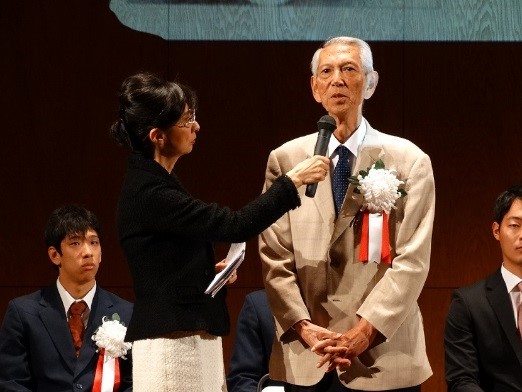
[Mr. Niikura]
Moderator: Mr. Niikura, you have translated the works of Ezra Pound and the 19th century American female poet Emily Dickinson, and have conducted research into them. What is it about Emily Dickinson's poetry that has continued to touch people's hearts for so long?
Niikura: As you can see from the biographical film about Emily Dickinson, while others went abroad and praised the superficial culture of other countries, Dickinson continued to look inward without going anywhere. I thought that such a thorough way of living was the job of a poet.
Moderator: I hope you will take this opportunity to read it. You say that the reason you studied modernist poetry was because of Japan's defeat in 1945. You describe this as an experience in which your values were turned upside down, but what kind of experience was that for you?
Niikura: The ideas that were taught in Japan during the war were no longer valid after the war, so when people thought about where to look for new values, they realized that poetry was most closely related to how they wanted to live and die.
Moderator: You were born in Hayama and have lived in Zushi for a long time. How do you feel about living in Hayama and Zushi?
Niikura: The best thing about Hayama and Zushi is that they have the sea. When I lived abroad, I was inland, so when I thought something was strange, it was because there was no sea. I can't imagine living without water.
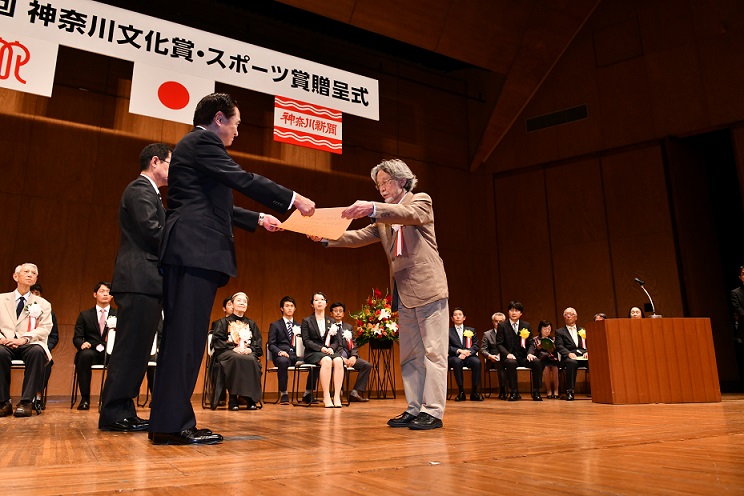
[Mr. Nishimura]
Moderator: You have established an observational picture book that depicts the ordinary lives of ordinary people using only pictures. Do you think readers can empathize with you by seeing these things from the ordinary lives of ordinary people?
Nishimura: When I first started making picture books, I wasn't sure what I could do, but as I delved into what I loved, I realized that I wanted to carefully write about people's lives, or the various ways people live their daily lives, so I observed people and drew them.
Moderator: I understand that you are currently working on a picture book about Japanese festivals. Of all the festivals you have covered, which one(s) resonated with you the most, or were most impressive or fascinating?
Nishimura: For the picture book on Japanese festivals, I covered nine festivals, varying from different parts of Japan to different seasons and types of festivals. Each festival had its own problems, and although I had intended to depict traditional festivals, I discovered that they were all struggling with issues such as declining birth rates and depopulation. I learned that festivals change as they go along, depending on the thoughts of many different people.
Moderator: You have lived in Fujino for a long time. You seem to have a lot of contact with local elementary school students, and Fujino is a town of art, so are there any things that inspire your creative activities?
Nishimura: It's been 37 years since I moved to Fujino, and with the help of the prefecture it has become a town of art, and as a result it has become a very diverse and interesting place with lots of interesting people, each with their own goals that they want to achieve. All sorts of exciting things are starting up all over the place.
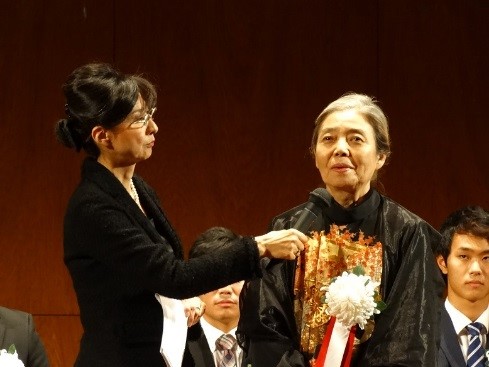
[Mr. Kizuki]
Moderator: You spent your time in Yokohama from when you were in junior high school until you were 21 years old, and the long-established izakaya restaurant Kanoya in Noge was opened by your mother shortly after the war. What does Yokohama mean to you as a city?
Kimiki: Around the same time this award was launched, in 1952, my parents opened a tavern in a small place in Noge, and then we moved to Yokohama together a few years later, and I went to school in Tokyo. The human relationships in Noge are really interesting, and one day the police came to investigate and found out that the man who worked at our bar was a murderer, and they were all really terrible people, men, but that was the kind of tavern my parents ran.
My memory of Yokohama is the Tsurumi accident in 1963, a major railway accident after the war. My father was in the second car of the Yokosuka line, and it derailed in the dark on the bank of Tsurumi, and it was a major accident that took 3, 4, and 5 cars. My father, who was on the train, took the ticket and changed trains to Noge. I was about 19 years old and had just started going to a place called Bungakuza in Tokyo, and at night, more and more names of people who died were being shown on TV. My father was watching while working hard at the store, but if his daughter's name wasn't being shown, she wouldn't come back. I came back after 11 o'clock when the store was closed, and everyone was so worried that they were screaming. Why did I go home? I came back on the Toyoko line. In other words, I used a different line depending on the day. That was how close we were. If I hadn't lived in Yokohama, I wouldn't have had to go through this. It's a great memory.
Moderator: When you were a junior high school student, you painted an oil painting of the view of the prefectural office as seen from Nihon-dōri, and it is still treasured to this day. Do you still remember painting it?
Kizuki: I love sunsets, so when I was in junior high school, I did an oil painting of the prefectural office as seen from Nihon-dōri. It has a really beautiful appearance, and I still treasure it to this day.
Yokohama and Kanagawa Prefecture are fashionable towns. Noge is also interesting, but Yokohama is a fashionable town that can be proud of in the sense that it is a city of international exchange. However, I always commuted to Tokyo from there, so when I said I would like to receive this, my younger sister and her husband, who are married in Yokohama, said to me, "Sister, why would someone from Tokyo receive this?" and "We're not happy." I can't really talk about my memories of Yokohama in a very arrogant way (laughs).
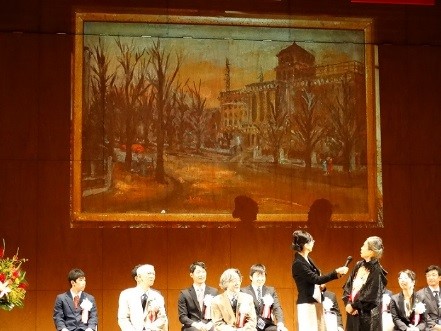
Moderator: Finally, please tell us a little about any upcoming projects you may be appearing in.
Kimiki: My sister's husband's house happened to be vacant in Idogaya, Yokohama, so we borrowed it and are using it as a location set for the upcoming movie "Every Day is a Good Day," which is about the everyday life of the tea ceremony. I think we'll be able to drink tea for a month or two even after the movie is over. That's how I'll continue to be connected to Yokohama.
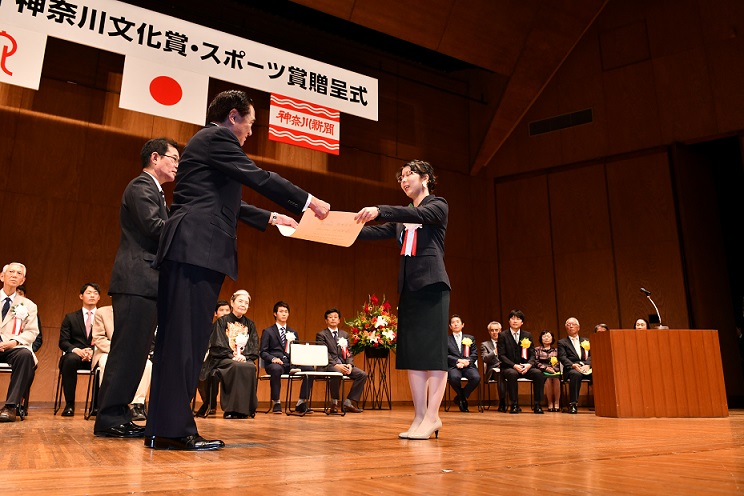
[Mr. Fukamidori]
Moderator: Your work is said to be very visual, and you yourself seem to be a big fan of movies. I think it's difficult to say which one is your favorite. Even if it's not your favorite, what work has had the biggest influence on you?
Fuki Midori: When I was in kindergarten I watched a TV drama called "Storyteller" which was produced in the UK and the US. It was a puppet show based on old European and Middle Eastern folklore. It was a series with lots of really interesting stories and it had a big influence on me.
Moderator: You mentioned your childhood, and I understand that you lived in Atsugi. What kind of child were you?
Fukimidori: When I was a child, I lived in an apartment in Atsugi. My sister and I would go into the willow bushes in the garden on the first floor to look for fairies, and I would play in the park with the neighborhood kids.
Moderator: What about your next work? Do you have a lot of ideas in mind? Is it going to be a mystery?
Fukimidori: It is a mystery. The story I am currently writing and will likely be released next year is set in Germany in July 1945, in Berlin, which is under the occupation of the four Allied powers. The story is about a girl who goes with a thief to report the death of a certain person, but it is a mystery because it involves a murder case.
Congratulations to all the award recipients.


